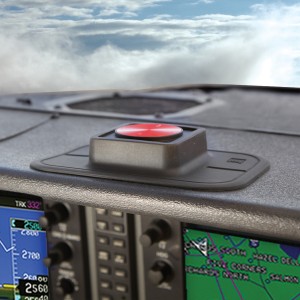
External iPad GPSs were one of the first accessories to appear for the iPad. After the iPad was released in 2010, pilots quickly realized that the tablet was far more useful with an accurate position source – moving maps, terrain warnings and so much more come into play. Initially, there were very few options for pilots, but the market has rapidly expanded and now there are more choices than ever. How do you pick the right one? Let’s survey the market.

Do you need a GPS?
The first question some pilots may ask is whether you even need an external iPad GPS. If you own a WiFi-only model iPad, it’s simple – you have no built-in GPS so you definitely need one. However, LTE model iPads (ones with the cellular radio in it) have a built-in GPS receiver. Note that this GPS is completely separate from the cell service, so you don’t even have to have an active data plan for the GPS to work. You could buy an LTE model iPad, never activate your Verizon or AT&T service, and still have GPS data.
But while the on-board GPS does work with all popular aviation apps, it was really designed for ground use and it’s not always as reliable in the air. It has a tendency to drop offline occasionally, especially when switching between apps or when the iPad goes to sleep. It’s not necessarily a question of accuracy, but of reliability. You don’t want the GPS to be a little slow waking up right at the final approach fix in the clouds. For this reason, many iPad pilots – even those with an LTE iPad – opt for an external GPS. It’s pretty cheap insurance.
More recently, with the exploding popularity of portable ADS-B receivers like the Stratus and GDL 39, external iPad GPSs have faded in popularity just a bit. If you have a full-featured ADS-B receiver, you do not need a separate GPS, since all of them include one already. However, if you’re just getting started with the iPad and don’t want to spend $500-$1000 for an ADS-B receiver, a GPS represents a great way to get started. Some pilots who own an ADS-B receiver also keep an external GPS on hand, either because their model doesn’t include GPS (like the Scout), or for backup.
Note that GPSs are app-agnostic – that is, they work with almost any app because Apple builds “location services” into its core iOS functionality. Many of these GPSs are also compatible with Android devices.

Plug in or wireless
If you’ve decided to buy an iPad GPS, the first question to consider is a pretty simple one: do you want a small GPS that plugs into the bottom of your iPad or do you want a wireless GPS that can be mounted remotely? The plug-in model wins for simplicity since it runs off your iPad’s battery. Just plug it in and open your favorite app. There is no battery to charge, no wireless settings to adjust and not even a power button. The only downside is that it’s (by design) limited to one device and it does stick out of your iPad. That’s not a major problem – we recommend flipping the iPad around so that it sticks out the top – but some pilots don’t like this.
Bad Elf offers the only plug-in GPS model, and it’s available for any Apple device with the Lightning connector. This GPS costs $99.99.
Wireless GPSs connect to your iPad via Bluetooth, so they do require some basic setup to pair the two devices. There’s also a battery to keep charged in the GPS, which means a little extra work. But there are plenty of advantages to a wireless GPS too, including the ability to mount it out of the way or in a better place for reception.
Wireless GPSs are available from Dual Electronics, Garmin and Bad Elf. The Bad Elf Pro even includes a small screen for status messages and basic GPS position data. Prices range from $99.95 to $249.99.

Basic or deluxe
The next question is whether you want a basic, lower cost model or a deluxe model. The three main features of the higher end models are: longer battery life, data logging functions and the ability to connect to multiple iPads simultaneously – a nice feature for two pilot crews or for connecting to a phone for backup. None of these are necessarily must-have features, but if you’ll be flying regularly with a GPS, the longer battery life is worth it.
Two models are available in this deluxe class. Bad Elf offers their Pro+ GPS with all of these advanced features, plus an altimeter, for $249.99. Dual offers their XGPS160 model for $149.95.
Our picks
Which one is best for pilots? None of these GPSs is really a bad choice, but we’ll offer two picks. For a good performer at a good price, the Dual XGPS150A is hard to beat. At just $99.95, it offers good battery life, reliable performance and a handy dash mount. It has been one of the best-selling models for years and gets good reviews from pilots.
For a deluxe model, or for pilots who fly with multiple devices in the cockpit, we like the new Bad Elf Pro+. At $249.99 it isn’t cheap, but it’s very well made and has a number of great features: an incredible 35 hour battery life, handy built-in screen, altimeter and connection to multiple devices.
You can see the entire selection of iPad GPSs at Sporty’s.
Source: Ipad appsHow to choose the best GPS for your iPad